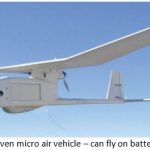Sanjay Jha is taking over as CEO of GlobalFoundries. His background is in mobile. He was at Qualcomm in the early part of his career and was COO from 2006 to 2008 before going to be co-CEO of Motorola and then, when the company was split, CEO of Motorola Mobility. That was acquired by Google and he stepped down after the acquisition closed.
He was born in India. His educational background is a little odd, with an engineering degree from University of Liverpool (in England) and a PhD in EE from University of Strathclyde (in Scotland, and where I actually worked for 4 months between my undergraduate degree and my own PhD, as it happens).
Ajit Manocha was always officially acting CEO, a safe pair of hands while a new CEO was found. He will return to his role as an advisor to the company’s shareholder (Abu Dhabi’s Advanced Technology Investment Corporation, ATIC). GlobalFoundries only has one shareholder. They used to have 2 but ATIC bought out AMD’s share in 2012.
GlobalFoundries also announced (actually last Friday) that they will deploy an additional $9-10B of capital over the next couple of years, primarily the buildout of Fab 8 which is in Saratoga New York, and is GlobalFoundries’ most advanced fab. Some will also be invested in Dresden Germany and in the ex-Chartered fabs in Singapore.
GlobalFoundries is the second biggest foundry, but it is a long way behind TSMC both in terms of revenue and in its capability to deliver leading edge processes so Sanjay certainly has plenty of challenges. But the brass ring in the leading edge foundry business is the mobile industry and his connections there from Qualcomm and Motorola have to be an advantage. The biggest challenge is really to turn what seem to be almost unlimited amounts of money from ATIC into a business that is truly competitive with TSMC, Samsung (and maybe Intel). The other foundries such as UMC and SMIC seem to be struggling even more than GlobalFoundries (or are specialized analog fabs that don’t really compete in the same business). In the long run, if GlobalFoundries is going to be truly successful at the leading edge it needs to get some business from the likes of Apple, Broadcom, nVidia and…err…Qualcomm. He might be able to get them to return his phone calls having been COO.
I wish him luck. The foundry ecosystem needs a strong number 2 competitor.


